Posts Tagged: clay
Clay's Bees: The Bees, They're Gone
The bees, they're gone. Beekeeper Clay Ford, who owns the Pleasants Valley Honey Company, also known as "Clay's Bees," is devastated. The...
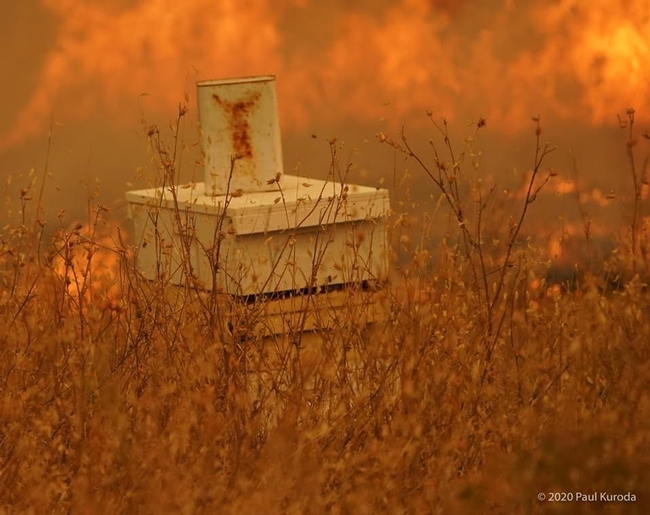
Fire rages towards Clay's Bees during the Vacaville Fire. (Image courtesy of Paul Kuroda, used with permission)
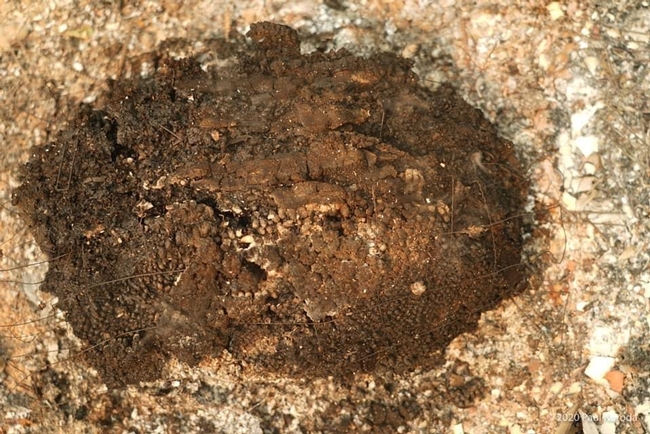
Melted honeycomb from the hives of Clay's Bees, Pleasants Valley Road, Vacaville. (Photo courtesy of Paul Kuroda, used with permission)
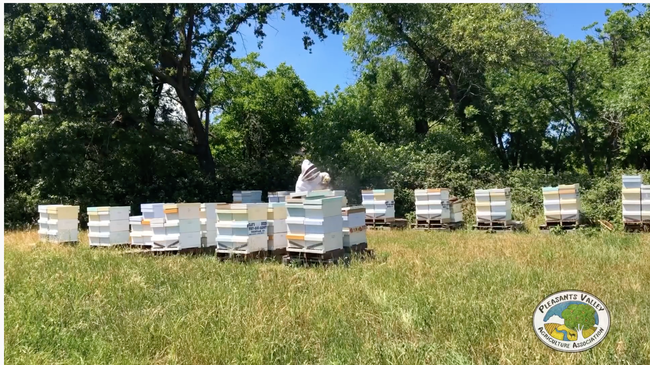
These are some of the bee hives that Clay Ford of the Pleasants Valley Honey Company, also known as Clay's Bees, lost to the Vacaville Fire. (Photo from YouTube video, Pleasants Valley Agricultural Association)
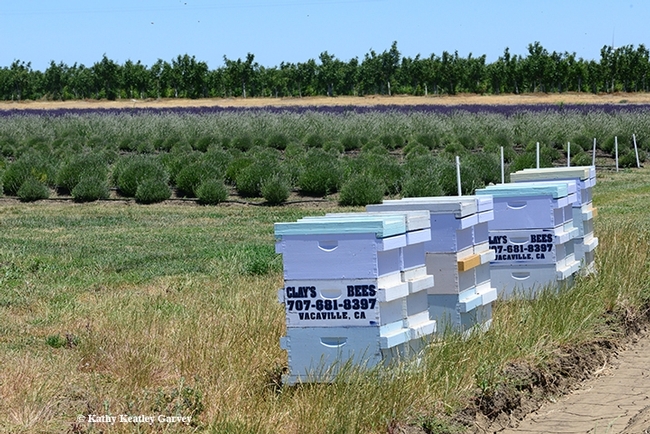
These are Clay's Bees at a lavender farm in nearby Dixon. This image was taken in June 2019 during Lavender Day. (Photo by Kathy Keatley Garvey)
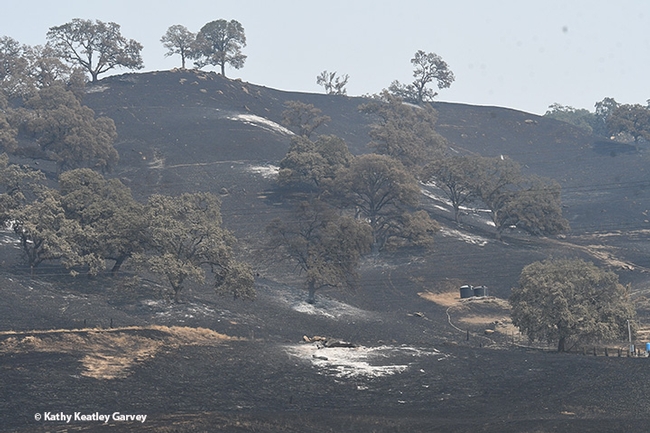
The Vacaville Fire roared down these hills onto the Pleasants Valley Road area where Clay Ford kept his bees. This photo was taken Monday afternoon, Aug. 24, re a road-access permit issued by Lt. Jon Mazer of the Solano County Sheriff's Department. (Photo by Kathy Keatley Garvey)
Lovin' the Lavender
Lovin' the lavender... If you attended the Lavender Festival last weekend at the six-acre Araceli Farms at 7389 Pitt School Road, Dixon, you were in...
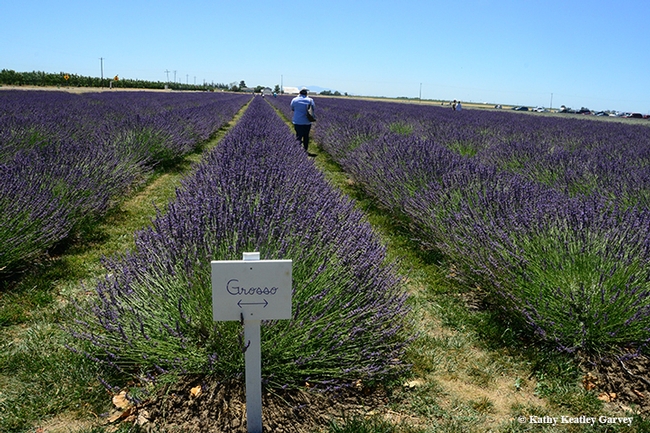
The six-acre lavender fields on the Araceli Farms, on the outskirts of Dixon, glow during the Lavender Festival. (Photo by Kathy Keatley Garvey)
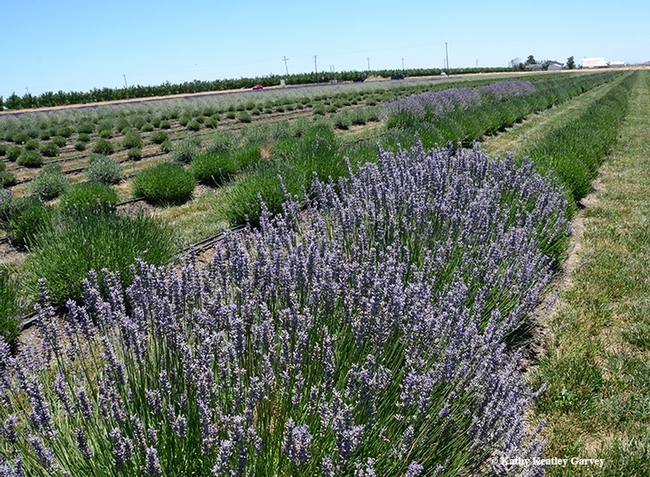
The Araceli Farms are planted with seven varieties of lavender: seven varieties of lavender: Grosso, Provence, White Spike, Royal Velvet, Violet Intrigue, Folgate, and Melissa. (Photo by Kathy Keatley Garvey)
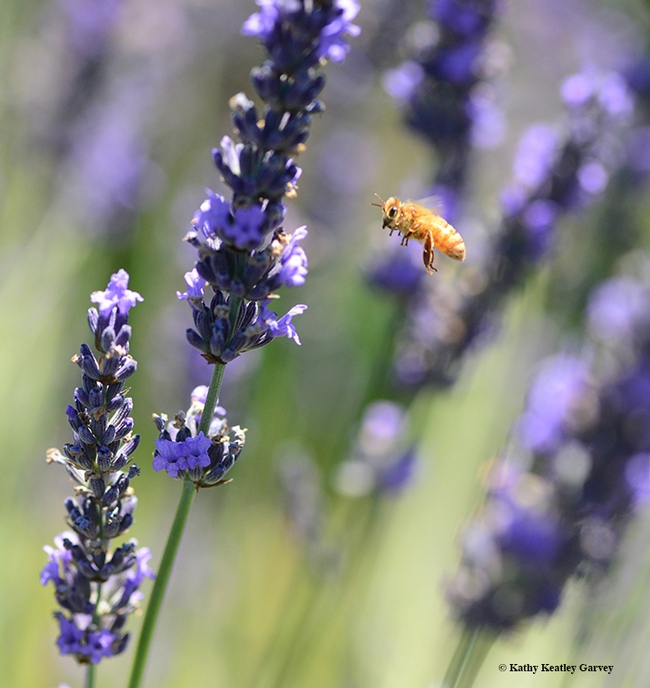
A Cordovan honey bee, the color of pure gold, takes flight through the lavender fields. (Photo by Kathy Keatley Garvey)
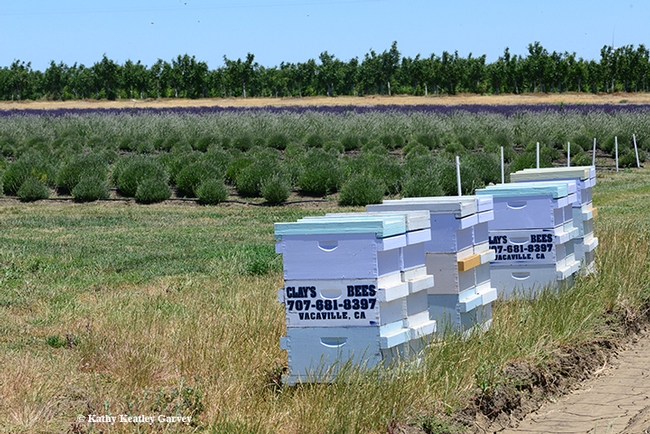
Clay's Bees--Clay Ford, owner of the Pleasants Valley Honey Company, Vacaville--pollinate the lavender fields. (Photo by Kathy Keatley Garvey)
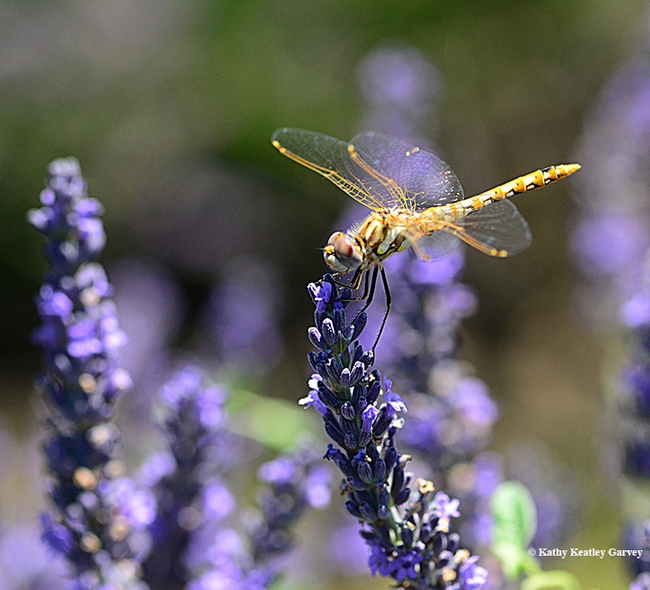
A variegated meadowhawk (Sympetrum corruptum)in the lavender fields. (Photo by Kathy Keatley Garvey)
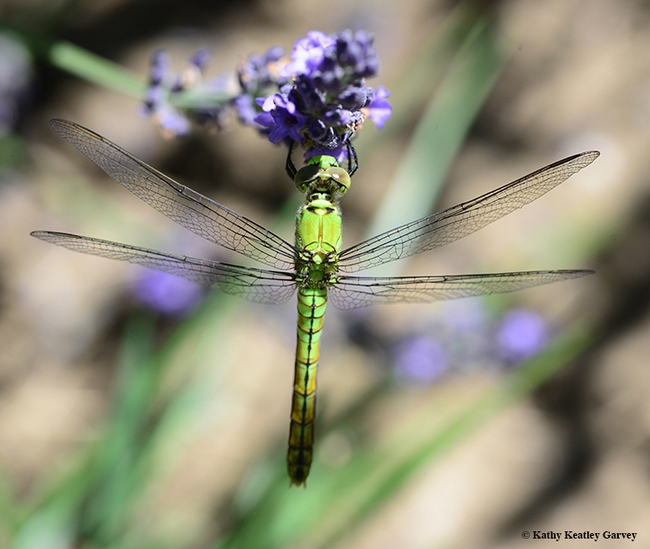
A Western pondhawk (Erythemis collocate) rests on a lavender. (Photo by Kathy Keatley Garvey)
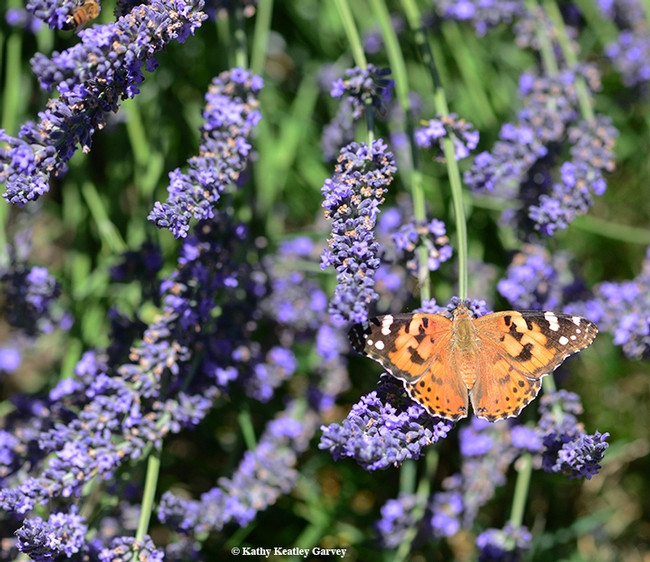
A painted lady butterfly (Vanessa cardui) flutters around the lavender fields of the Araceli Farms in Dixon on June 22. (Photo by Kathy Keatley Garvey)
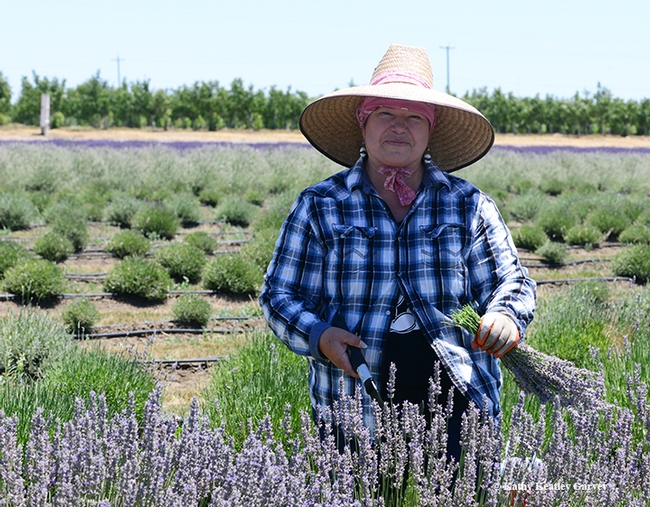
Maria Gonzalez of Dixon cuts lavender on the Araceli Farms. (Photo by Kathy Keatley Garvey)
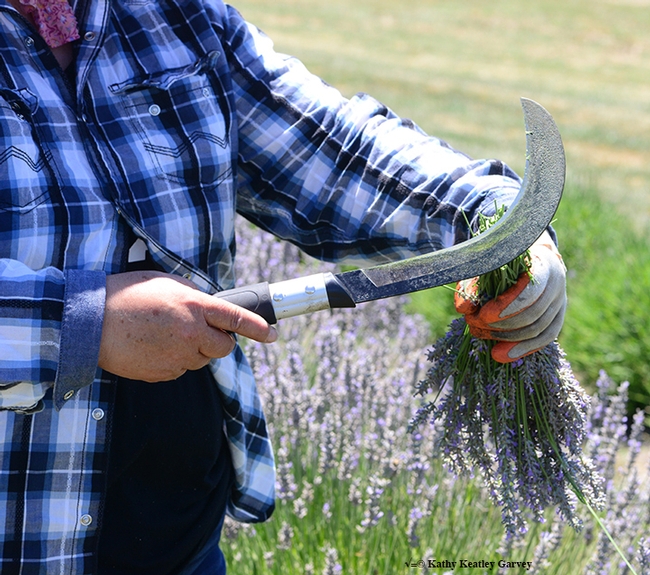
Close-up of the curved knife, perfect for lavender harvesting. (Photo by Kathy Keatley Garvey)
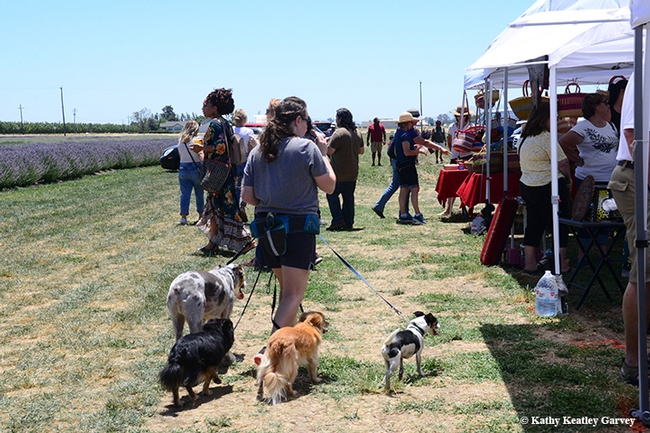
Visitors at the Lavender Festival at Araceli Farms stroll through the vendor area. (Photo by Kathy Keatley Garvey)
In Search of the World's Biggest Bee: How It Came to 'Bee'
Imagine you're in an Indonesian rainforest and a humongous bee, with a wingspan of two and a half inches, flies over your head. The world's largest...
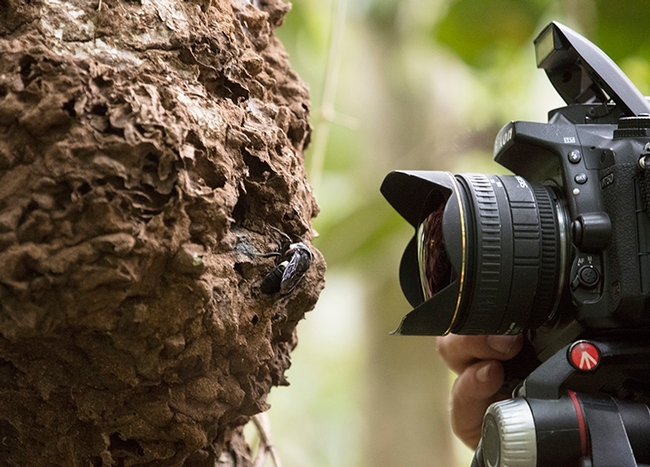
Natural history photographer Clay Bolt photographs Wallace’s Giant See in its nest. The bee nests in active termite mounds in the North Moluccas, Indonesia. (Copyright Simon Robson)
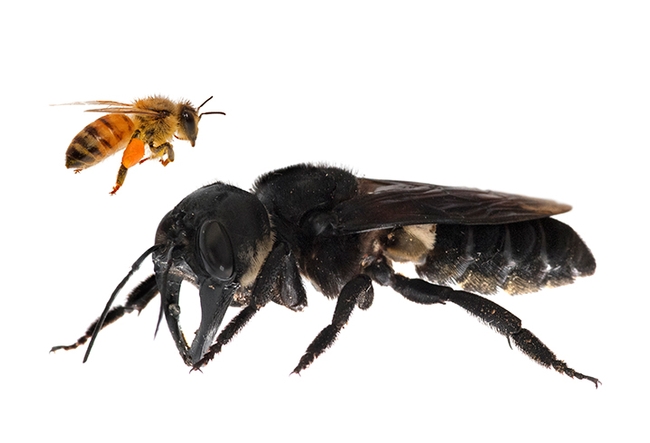
Wallace’s Giant Bee. Megachile pluto, the world’s largest bee, is approximately four times larger than a European honey bee. This is a composite. (Copyright Clay Bolt, www.claybolt.com)
Saving the Rusty-Patched Bumble Bee
Hear that buzz? That's the sound of success. It finally happened. The beleaguered rusty-patched bumble bee, Bombus affinis, is now listed by...
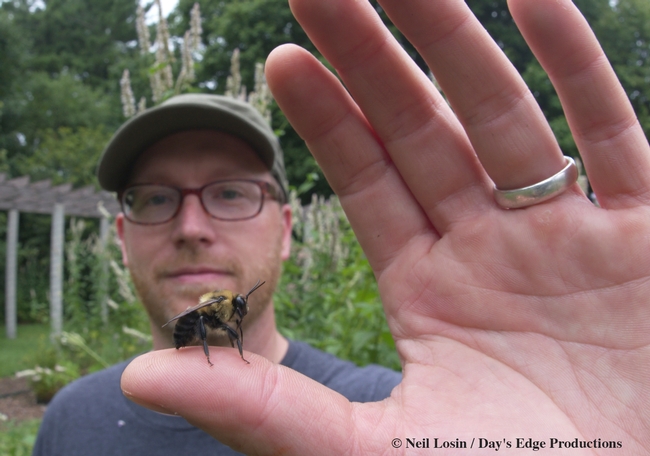
This is a frame from the film, "Ghost in the Making," showing Clay Bolt with the now endangered rusty-patched bumble bee. © Neil Losin / Day's Edge Productions
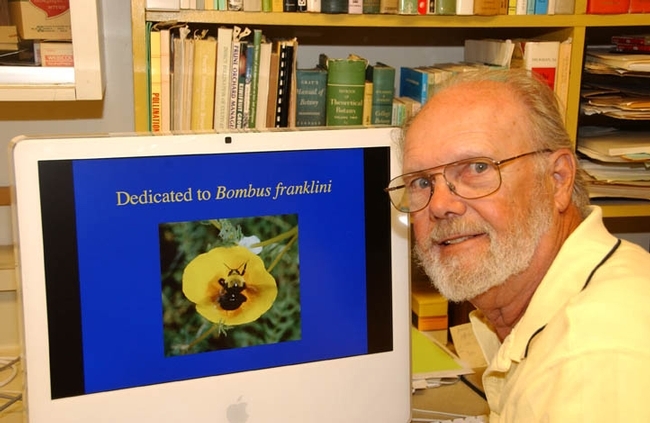
Noted bumble bee expert Robbin Thorp, distinguished emeritus professor of entomology at UC Davis, helped spearhead the project of getting the rusty-patched bumble bee listed as endangered. Here he's pictured with the critically imperiled Franklin's bumble bee. (Photo by Kathy Keatley Garvey)
Plants for Clay Soil and Other Things
Today while going through my e-mail, one of them really caught my eye. It was the monthly newsletter from BIRDS & BLOOMS, a magazine dedicated to those who both garden and bird-watch. I first came across this magazine when my mother, who subscribed, gave me her copies. I always thought of it as one of those publications for the “older set” and didn’t give it much thought. After mom passed, the subscription still had 3 years left, so I kept getting it. The more I read it, the more interesting this magazine became!
So here it is 2013 and now I have my own subscription that is complimented by this monthly on-line feature. Sometimes the features are on target and other times they are not –when not, it’s usually big time: articles that pertain to the Mid West only.
Imagine my surprise when the topic for this month is “Plants for Clay Soil”. I had to read the article thoroughly in case it held nuggets of wisdom I should -- nay, must have! I feel better now, since most of the plants listed are in my yard! Asters were the first on their list (which is only correct as these plants are listed alphabetically). Not only it common name; botanical name (a real plus when you are actually looking for the listed plants!); hardiness, bloom season; size ( that’s another big plus to the list); flowers, both colors and shape; light needs; growing advice (this is necessarily somewhat vague when you consider that this advice is trying to cover the entire USA, but you can tweak it according to where you happen to be); and, finally, what is called the “prize picks” or listing of what the editors consider to be the best variety.
Of the plants selected, I have the day lily (hemerocallis), switchgrass (Panicum virgatum) Viburnum (Viburnum sps), and various ferns including the squirrel’s foot fern (Polypodiumspp.), which hangs from a piece of all-thread screwed into the pergola . Potentilla (Potentilla fruitcosa) is a favorite as a small ground cover in the side yard, running into the baby’s tears (Soleirolia soleirolii).
The entire list is Aster, Black-eyed Susan, Coreopsis, Daylily, Ferns, Japanese Iris (mine died a very painful death, at least to my wallet), Runner bean, Switchgrass, Potentilla, and Viburnum. How many do you have in your yard?
PS: To those of you who noticed that the Switchgrass was listed before the Potentilla, it’s because using botanical names, Panicum comes before Potentilla!
Now to go and unwrap and plant my new rose from Vintage Gardens. The last sale – until the management announces another release before they go out of business for good!
PPS: I guess I have joined the “older set”!
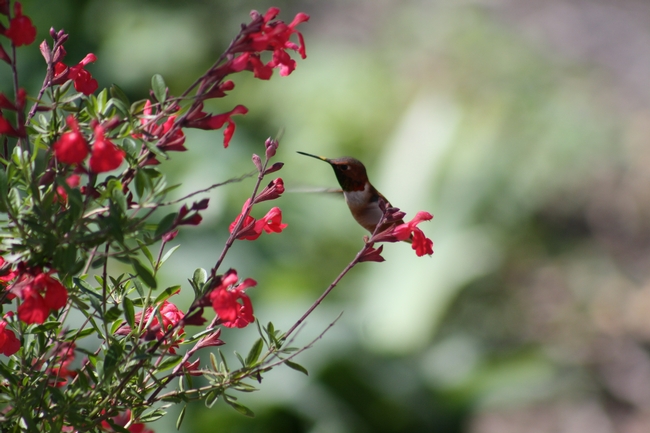
Rufous hummingbird visiting a 'Lipstick' sage. (photo by Jennifer Baumbach)

